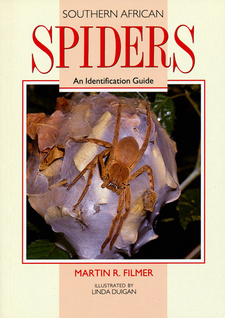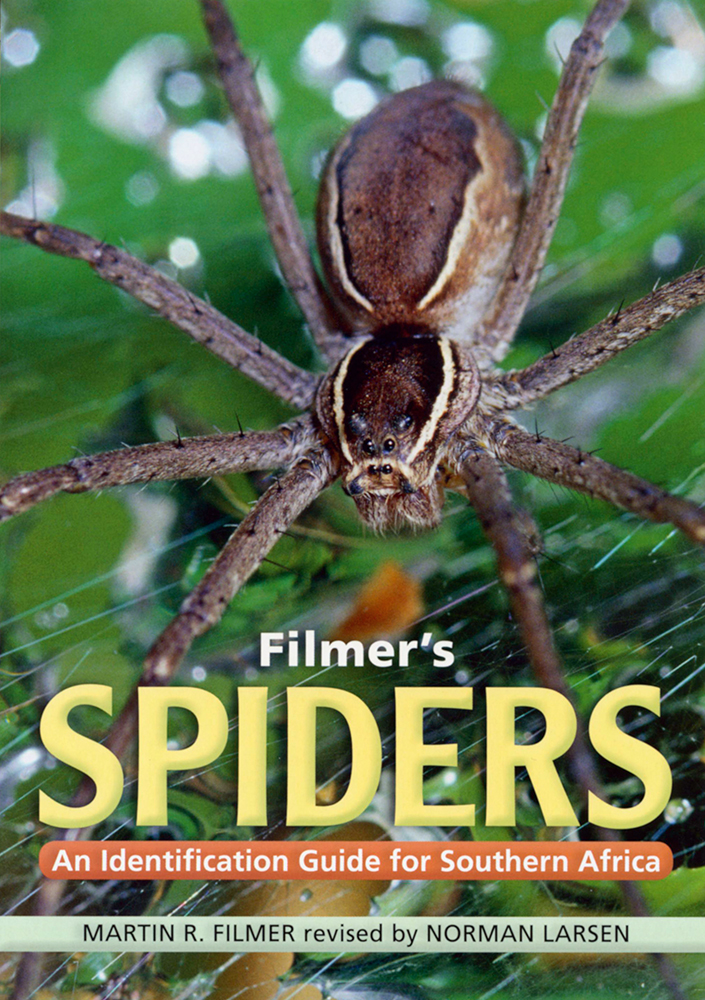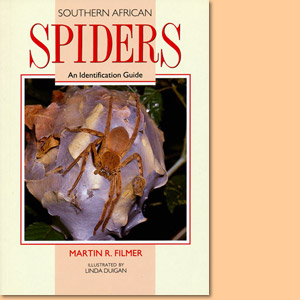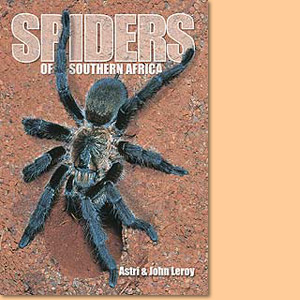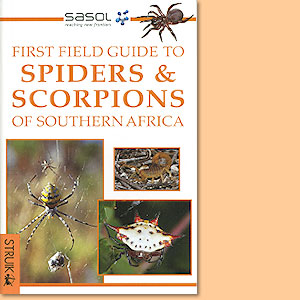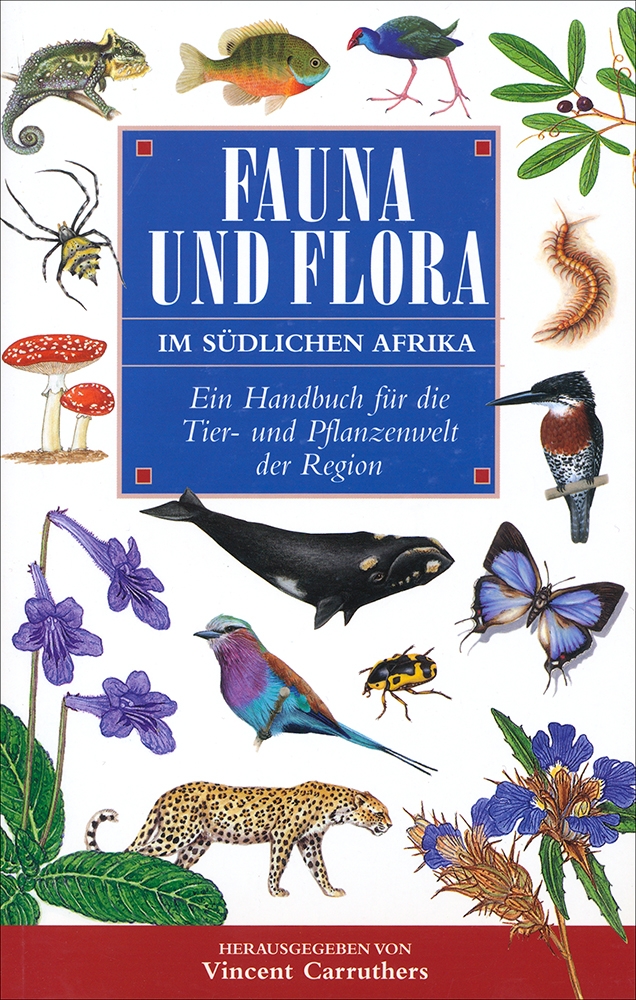Southern African spiders: An identification guide, by Martin R. Filmer
This well-known identification guide, writtem by late Martin R. Filmer features the 63 families of spiders of Southern Africa.
This book started as a much-needed attempt to fill the gap in the literature for the rank amateur, the interested naturalist-arachnologist and the budding future professional. Developing the concept, I felt myself pulled more and more to the need in southern Africa for a book of value to professionals - including, with the family information, keys to all the known genera and species. However, this required expertise and background material available only to a professional arachnologist; and how far could I go while continuously running into taxonomic changes, without losing sight of the original concept? In an attempt to solve the problem I spent many hours discussing the project with Dr Ansie Dippenaar, curator of the National Collection of Arachnida (non-Acari) at the Plant Protection Research Institute in Pretoria. Within months of our first meetings, however, two books on South African spiders had appeared on the market, one dealing with medically important spiders and scorpions, and the other, a pocket guide in a series, limiting itself to only 23 interesting families. Although these two books catered for the rank amateur, those whose interest either required more detail or was professional were still neglected. So we launched into the 'big one' ... but then we received a call from the Spider Club of Southern Africa for a comprehensive but not overwhelming field guide to all 63 southern African spider families, with drawings and text to allow for identification in the field and at home, using modest enlarging equipment such as a magnifying glass and torch; and including diagnostic features, special web patterns, and any specific behaviour. So we are back to an identification guide - and a book that I hope does include all the spider families that can be found and does answer most of the questions posed by amateur and professional alike.
What is a spider? Ask one hundred people this question and you'll get about a hundred different answers, ranging from 'a bug' to a 'yeech', and maybe one or two knowledgeable answers. Spiders are, perhaps, the most misunderstood creatures on earth, and this is due mainly to ignorance. The fear and dislike many people have of spiders has no real basis. From childhood man is taught to kill or avoid spiders because they are 'poisonous'. When one considers that most people come into contact with spiders - knowingly or unknowingly - in their lives without coming to any harm, it should be clear how erroneous the general concept of a spider being venomous actually is. Spiders belong to the phylum Arthropoda, and this phylum makes up about 80 per cent of all known animals. The word 'arthropod' means 'jointed leg': arthropods have an exo-skeleton (a hard outer body covering) which includes three or four pairs of legs which are jointed so that they can bend. Arthropoda have been living on earth for literally millions of years.
Arachnids, those arthropods having eight legs, have been here for about 500 million years, some 200 million years longer than the insects as we know them today. While more than a million species of insects have thus far been described, a mere 30 000 species of spiders are known. However, it is estimated that this figure represents only 30 per cent of those spiders that do actually exist and more collection and identification are required to broaden our knowledge of these fascinating creatures. Many spiders are minute and as such are not easily seen; some, on the other hand, are veritable giants but are also not often seen because of their distribution and living habits. By far the greatest majority of those spiders encountered are the small to medium-sized, dull-coloured creatures that wander freely around the home and garden. I hope to show you the colourful spectrum of spiders that is all around us, living in a myriad habitats. [...]
This is an excerpt from the guide: Southern African Spiders: An identification guide, by Martin R. Filmer.
Title: Southern African Spiders
Subtitle: An Identification Guide
Author: Martin R. Filmer
Illustration: Linda Duigan
Publisher: Struik Publishers
Cape Town, South Africa 1995
ISBN 1-86825-188-8
Softcover, 15x21 cm, 128 pages, numerous colour photos and bw-illustrations
Filmer, Martin R. im Namibiana-Buchangebot
Filmer's Spiders. An Identification Guide For Southern Africa
Filmer's Spiders Identification Guide For Southern Africa features all 63 families of spider that occur in this region.
Southern African Spiders: An identification guide
This well-known identification guide features the 63 families of spiders of Southern Africa.
Weitere Buchempfehlungen
Spiders of Southern Africa
The guide Spiders of Southern Africa gives a sharp insight into a complex, often mysterious and always fascinating world of arachnids.
First Field Guide to Spiders and Scorpions of Southern Africa
These little guides are an invaluable resource for beginners
Fauna und Flora im südlichen Afrika
Fauna und Flora im südlichen Afrika: Ein sehr beliebtes Handbuch für die Tier- und Pflanzenwelt der Region.

